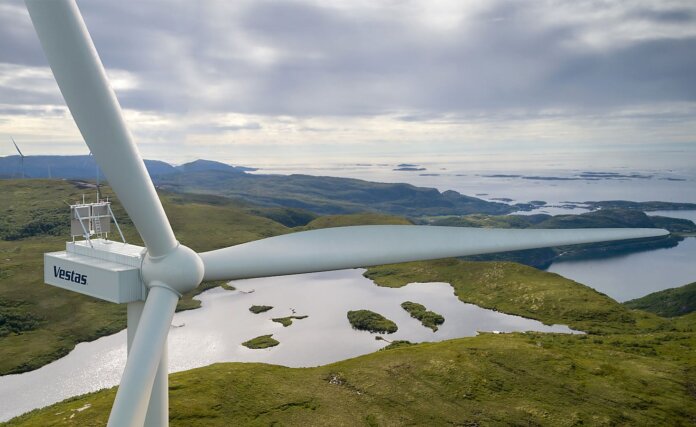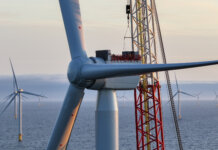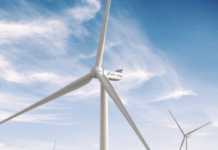Vestas says it has been delivering a blade recycling partnership solution for several wind farm operators across the U.S., with the first large-scale project having been successfully completed in September.
In that project, Vestas’ service teams decommissioned and recycled 10 turbine blades.
Several ongoing projects are currently in progress across multiple sites, including the 151 MW Blue Canyon 2 repowering project, as well as the 63 MW Snyder Wind project with Enel Green Power. Recycling of the decommissioned blades was a firm requirement from the operators of both projects. At present, all ongoing recycling projects in the U.S. have reached a scale of 285 turbines blades in total, including nacelle covers and hub covers.
As part of the solution, Vestas teams scope an optimal recycling project plan to align with locally available solutions and customer needs. The recyclable glass fiber material is then separated from the turbine and cut into transportable units. The material is then transported to vetted recycling partners, using a glass fiber recycling method that aligns with the customer’s sustainability ambitions. Recycling methods can include cement co-processing, gasification, forming new composite materials, and reclaiming glass fiber and carbon fibers.
“Nurturing a robust recycling infrastructure to support the waste management challenge across the renewables industry is an urgent and critical issue,” says Lisa Ekstrand, senior director and head of sustainability at Vestas. “Glass fiber recycling methods are now at a point where they can be scaled up rapidly, and with renewable plant owners becoming increasingly conscious of the environmental impact of their decommissioned assets, it’s no longer a question of demand or volume.”
“At Vestas, we’re ready to support the scaling up of glass fiber recycling worldwide, leveraging our global transport and logistics footprint, and we’re ready to offer recycling partnership solutions wherever we see an opportunity with local recycling partners and where it is valued by customers,” Ekstrand adds.
To help drive more maturity in industrial recycling, Vestas is currently part of the DecomBlades project, a cross-sector initiative striving to increase the adoption of recycling practices by developing pathways for commercialization. Vestas is also working to support the adoption of a circular economy across the renewables industry. Vestas is currently spearheading the CETEC project, a consortium of academic and industry leaders, aiming to commercialize a new circularity technology for turbine blades.
“Supporting a more sustainable future for wind power is a key priority for Enel, so we are determined to accelerate the adoption of blade recycling practices across our projects when they reach the decommissioning phase,” states Peter Perrault, director and head of circular economy at Enel North America. “Working with Vestas unlocks new possibilities for our circularity ambitions, as it enables to us to add scale to our recycling efforts.”
Vestas is accelerating recycling solutions as part of its service offering as market conditions around waste management continue to evolve. With a 52,000 tons of blades waste predicted to exist by 2050 in Europe, and more than two million tons in the U.S. by 2050, the need for scalable recycling pathways is increasing.




